Compare static website hosting
Compare Static Website Hosting
We compare the features of the 5 leading serverless cloud platforms for static websites.
Key features of cloud platforms explained. Find out which cloud is best for your next project by downloading YouDoCMS and test all 5 clouds from a single application. No credit card required!
AWS | |||||
|---|---|---|---|---|---|
| Free Plan | 12 Months | ||||
| CDN | - | ||||
| Custom Domain | 2 | ||||
| DNS Registry | |||||
| SSL Certificate | |||||
| Data transfer | 1 TB/month | - | 360 MB/day | 100 GB/month | 100 GB/month |
| Files Limit | 5GB | 20k | 10GB | 1GB | 5GB |
| File Max SIze | n/a | 25MB | n/a | 50MB | n/a |
| File Explorer | |||||
| Pretty Urls | |||||
| Proxy Pass | |||||
| Storage | File | Object | Object | Object | File |
| Validate Cache | |||||
| Node CLI | |||||
| Site Analytics | Logs | Free/Paid | None | Logs |
KEY FEATURES EXPLAINED
How "free" is the free plan?
All of the cloud providers offer a generous free plan within the storage limits. AWS is the only provider which charges for storage however the fees are so low it's inconsequential. When considering which is the best free static website hosting plan file size, storage and traffic limits are more relevant. It's also worth remembering that time is not free and a simple install makes a difference.
Do I need to switch DNS registrar?
AWS and Cloudflare are the only two platforms which currently offer a DNS registry, with Cloudflare offering this service at cost. An integrated DNS registry on a single platform simplifies the management of your static site. However all platforms offer custom domain so this feature is about simplicity and ease-of-use.
File size or storage options which one to choose?
File size and storage are key differences between the platforms. Cloudflare is particularly restrictive with maximum file size and files limit. Similarly the storage mechanism makes a difference. AWS and Azure separate the CDN and storage which means you can export individual files with each deployment. Google, Cloudflare and Github use object storage which means you can only see the blob you deployed. Users who like to browse files and images may find this confusing.
How easy is it to setup hosting for a static site?
AWS, Cloudflare and Google all provide a node.js CLI which is cross platform and easily installed with YouDoCMS. Azure and Github use a binary executable that needs to be downloaded and whilst simple enough on Windows. If you are a Macintosh user the installation requires additional steps. Managing your site through the platform dashboard is similar with the exception of Azure which has a comprehensive but confusing interface.
Which is best for mobile?
In our tests we replicated this website on all 5 hosts . Speed matters on mobile for example in the case of the BBC every 1 second delay loading resulted in 10% fewer visitors i.e. a higher bounce rate. In addition site analytics plays an important part. However for optimisation on mobile AWS CloudFront or Cloudflare are the best choice for speed and analytics.
Deployment
All of the clouds excluding Github Pages support direct deployment from your local machine to the host via the CLI application. YouDoCMS supports building to localhost to preview and test your site before building to the host of your choice and deployment. Our system checks before deploying the site that the domain name matches the target cloud. On upload the CDN cache is cleared to refresh the content. Github uses the Git version control to synchronise to Github.
File Explorer and Storage
If you are used to the familiar web hosting control panels such as Plesk or cPanel then you will also be familiar with browsing the contents of your site via FTP when uploading the new content. We have all experienced using the website to store old content particularly old images. With a content management system this is not problem because this content is not linked and therefore unavailable via Joomla! or WordPress. AWS and Azure support file-based storage via buckets which is exactly the same as a control panel. However Cloudflare Firebase and Github are object-based therefore you cannot browse or update individual files. To update the site you have to do a new deployment.
SEO and Pretty URL'S
All of the clouds excluding Github Pages support pretty URLs i.e. without the .html extension. Therefore if you intend to use Github Pages and your existing WordPress or Joomla! site is not using the .html suffix this can cause a problem with 404 URLs until your site is completely re-indexed by the search engines.
If you are using pretty URLs then the clouds manage these slightly differently. AWS and Cloudflare append a trailing slash on urls to a directory page via a 302 redirect whereas Google Azure do not. See URL routing.
Server Logs
AWS CloudFront and Azure both offer server logs included in the free plan. Cloudflare also supports logs (paid). YouDoCMS integrates with CloudFront to download and import the logs on demand. Server logs offer a number of benefits compared to JavaScript site analytics because they cannot be blocked by trackers in the browser. Server logs inc 404 errors occurring due to missing content for example when you update or rename a page. YouDoCMS includes automatic deployment of rewrite rules to avoid 404 errors from old non-existent url requests.
Site Analytics
YouDoCMS includes server log analytics which is linked to your content to provide common metrics such as entry and exit pages, bounce rate, visitor geolocation and search engine crawl monitoring. AWS CloudFront and Azure both offer analysis via the server logs which means you do not need JavaScript tracking. Firebase is reliant upon Google analytics which can be blocked by browser extensions. However if you are an existing Google analytics user then Firebase is the best option. Cloudflare also provides JavaScript analytics (paid). See site analytics.
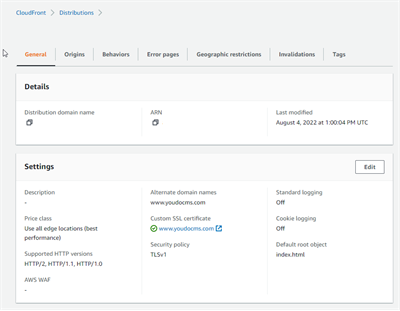
AWS CloudFront
AWS hosting consists of two products. CloudFront is the CDN and S3 is the storage. CloudFront is part of AWS always free option whereas S3 storage has a 12 month free period. However ongoing storage charges are very low.
In addition AWS static site hosting can also use the route 53 DNS registry and AWS identity management to provide a complete solution for serverless static website hosting.
File-based storage is useful for uploading individual files and for smaller sites provides a lot of flexibility compared to object storage.
- File storage S3 buckets.
- Cloudfront basic analytics and logs.
- Reverse Proxy.
- Route 53 DNS registry.
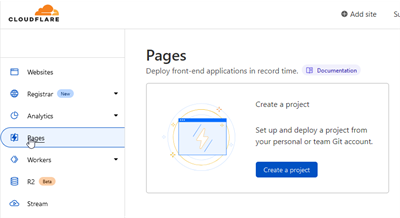
Cloudflare
Cloudflare is arguably the fastest CDN available and the pages product provides a simple solution for static hosting.
Cloudflare uniquely includes a non-profit domain name registry. If you transfer your domain to Cloudflare your ongoing fees are the wholesale price. This is a very attractive option for smaller sites.
Cloudflare pages is object-based storage which means you cannot upload individual files and have to deploy the whole site page each time you build.
- Fast CDN
- DNS registry.
- Object storage.
- 25MB Max file size
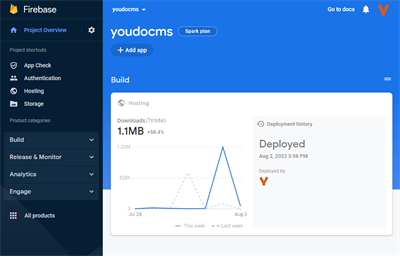
Google Firebase
Google Firebase offer the Spark plan for static website hosting with generous limits that make this a good choice for sites that do not need updating frequently.
Google does not have a domain name registry however spark includes a custom domain and object storage.
The Firebase node CLI is very fast and overall Firebase is very simple to set up.
- 10 GB files Storage.
- No maximum file size limit.
- Object storage.
- DNS registry.
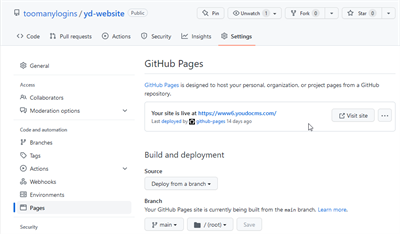
Github Pages
Github Pages is a slightly different solution for static website hosting. It utilises the Github platform to publish a static site. Furthermore this requires download and installation of both git and the Github CLI making the setup more complex.
The Github platform does not support pretty URL'S therefore your pages have to include the .html extension for filenames.
- DNS registry.
- Object storage.
- Max file size limit.
- Pretty URL'S.
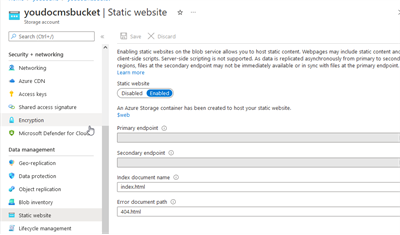
Microsoft Azure
Microsoft Azure Static Web Apps is the azure product for static hosting and is ideal for smaller sites. The free subscription is limited to 2 domains only.
Azure blob storage is free for the first 12 months however this is in addition to the static web apps service which is always free and inc 0.5GB storage per site.
Azure CLI needs to be downloaded and is complicated to set-up on a MacOS or Linux.
- 5 GB files Storage.
- Always free for 2 domains.
- Object storage with explorer.
- DNS registry.

“Although not entirely free AWS offers the best balance of features, ease of use and value for money. Firebase is a good alternative if free hosting is essential.”
Paul Dennis
Developer